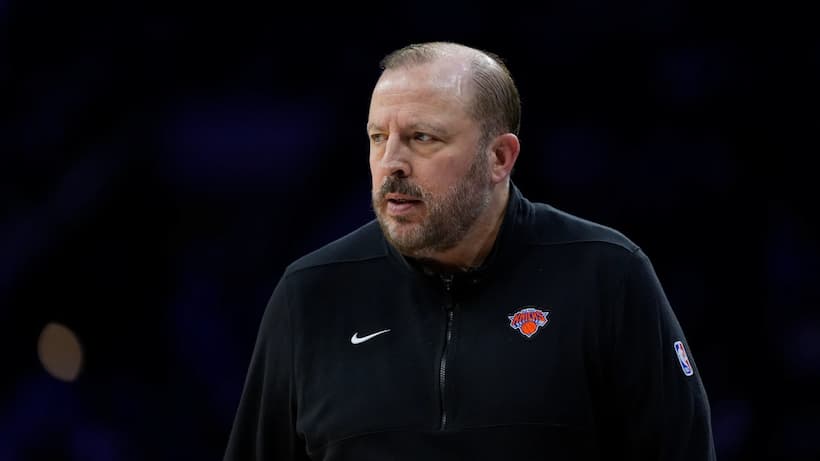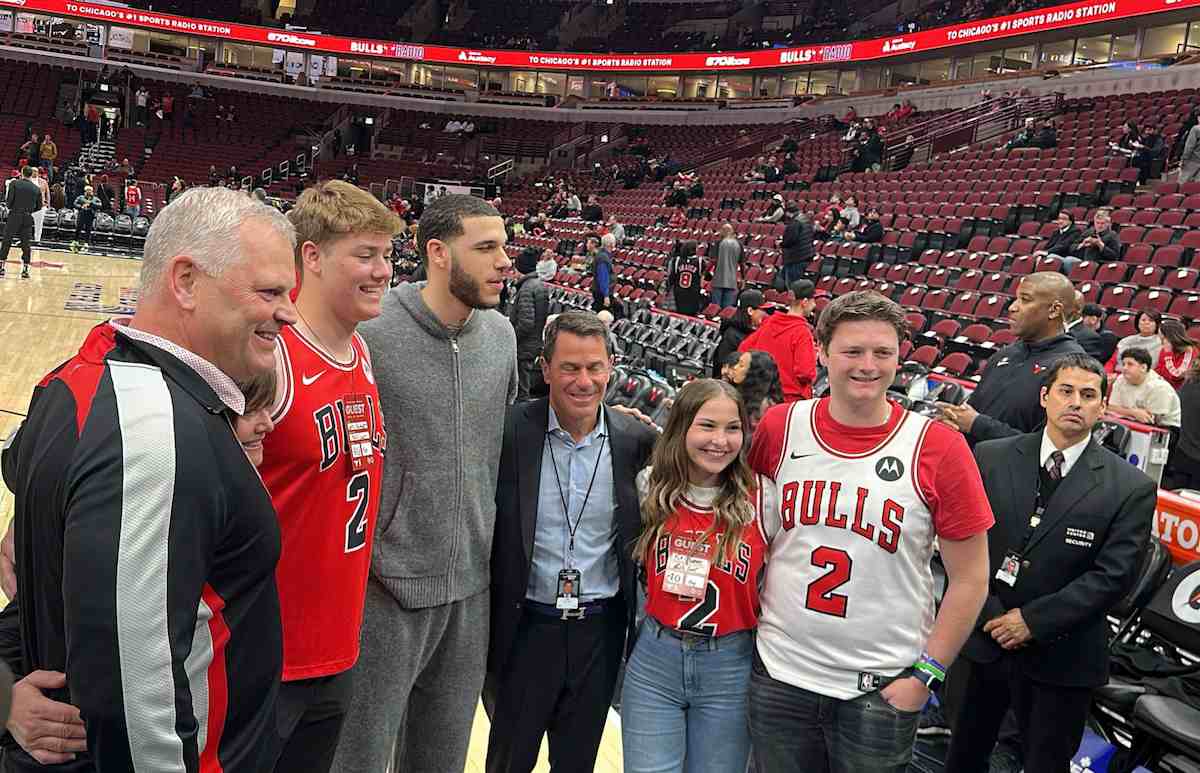BROOKLYN — Ime Udoka isn’t satisfied. After the Boston Celtics “suffocated” — a popular word around their defense lately — the Brooklyn Nets during an unprecedented 28-2 run to open their sixth straight victory earlier this month, he continued to stress the other side of the ball.
Udoka, process-oriented, wouldn’t identify a single turning point for the team on its way to 16 wins over its last 21 games before the break. The meltdown in New York last month, where he challenged the Celtics’ mental toughness, marked rock bottom, before a steady rise culminated in a wire-to-wire win across the Brooklyn Bridge, before more convincing wins over the Nuggets, Hawks and a near-50 piece of the 76ers.
President of Basketball Operations Brad Stevens wasn’t shy about pointing out a single moment everything changed: Udoka moving Robert Williams III into a roving, help position on defense while Al Horford defends the pick-and-roll. During Boston’s nine-game win streak, Williams III averaged 2.9 blocks per game. His 6.8 BLK% finished the first half of the schedule fourth in the NBA.
“I’ve got a good idea of what we can be when we’re at our best,” Stevens told 98.5 The Sports Hub. “I knew that we’d be great defensively if we all were connected and on a string. Probably the most encouraging thing, as I watch our team recently is that — and Ime’s done a really good job schematically with the defense — I think some tweaks to some matchups and where we put Rob in different things so that he can be a roamer and a protector at the rim, more than a guy that’s necessarily always exactly in the play have been really helpful. As a result, we’ve got a bunch of guys flying around and defending at a uniquely high level. I’ve had a lot of good teams here defensively, but this group has a chance to be unique to even those teams.”
Horford’s switchability with big man size and Williams III’s elite shot blocking are now the foundation of the Celtics’ No. 2 defense in the NBA; one that allowed 3.7 fewer points per 100 possessions than the No. 2 Dallas Mavericks since Christmas; one that, with a faster pace in transition and quicker decisions in the half court, propelled Boston’s offense into the top-10 over its last 10 games.
Yet Horford, 35 years old and a staple of the team’s +26.5 starting unit per 100 possessions, faced an uncertain future at the trade deadline. Horford’s $26.5-million deal is still on the books for the 2022-23 season, stemming from the $36 million Kemba Walker contract the Celtics offloaded in the offseason. Philadelphia originally signed Horford to that deal, then traded him with a first round pick to Oklahoma City.
The Celtics have now had to balance their own financial considerations against the fact that a rejuvenated Horford has become a helpful contributor this season. So they unloaded Josh Richardson, Romeo Langford, Dennis Schröder, Bruno Fernando, Enes Freedom, P.J. Dozier, and Bol Bol with multiple future picks, while further solidifying the team around the defensive identity by adding Derrick White and Daniel Theis. Stevens isn’t exactly building around Horford, but he’s an integral piece to, at least, the current puzzle. However, this summer they’ll be face with another crossroads.
The Athletic reported last month that Boston would explore trading Horford as the team pursued another center. Instead, Stevens retained him, but could make a move this summer. His $26.5 million for 2022-2023 is only partially guaranteed for $14.5 million until January 7, 2023 and there should be plenty of options in the offseason.
They could roster him through training camp and the early portion of next season, then make a decision based on how he looks at 36 or find a presumably a younger upgrade or use his salary in a larger deal as I wrote in Boston Sports Journal last week in a hypothetical Bradley Beal pursuit.
Only the guaranteed portion of Horford’s salary would count in outgoing trades this summer, making Horford a $14.5-million match then, rather than the $27-million he is now. However, if the Celtics make or win The Finals, Horford gladly gets a Boston victory lap and a pile of extra cash.
Once his guarantee date hits next January, he’ll reassume $26.5 million salary-matching value, while carrying the advantage of being an expiring contract. In the meantime, if the Celtics need to use that full figure in salary-matching, they can bump him from the partial to full guarantee, or anywhere in between for a trade. That gives them a wide array of avenues to shake up the roster this summer.
It’ll also give Horford some input on his own future. While his season hasn’t always veered in the direction he probably hoped for after a strong individual start, this became home again for Horford and his young children. If he ends up on a team that decides to waive him, the 35-year-old would likely consider what’s next, rather than chasing a smaller contract in another city. Staying one more season would probably allow him to retire as a Celtic or even re-sign to a team-friendly extension in the twilight of his career.
For now, Horford still provides value to the Celtics over most replacements. He passed from the high post, caught pocket passes around the free throw line, and facilitated on the short roll during Boston’s win in Brooklyn. He does provide some spacing, despite posting his worst three-point shooting season (30.7%) since he ventured out to the perimeter in 2015. His staggered second unit minutes, usually playing drop defense, are some of Boston’s best bench rotations.
“We’re stopping on the short roll now,” Udoka noted after the Nets game. “The wings are spreading out and giving (the bigs) outlets as well … other than the bigs over-rolling their spots sometimes and leaving our wings hanging, we’ve been ok at that for the most part. Al in that pocket is really good, Grant in that pocket is really good and Rob’s improved.”
Udoka has recently found shades of Horford’s early-season success by scaling back his minutes, Horford averaging 8.1 rebounds, 2.8 assists and 1.3 blocks per game over his last 12 appearances, playing just a shade over 25 minutes per game. The minute reduction (from 29.1 MPG prior) occurred somewhat naturally, due to the quick work the starters have made of their opponents. Horford’s also shooting 40% from deep over that stretch. The addition of Daniel Theis will further allow Boston to rest Horford heading into the playoffs.
The frontcourt from the 2018-19 Celtics is reunited, minus Aron Baynes and they’re all thrilled. Horford’s still the team dad, as family members repeatedly note, a calming presence who speaks up when needed, but largely leads by example. His fixations on defense and playmaking give the team a bedrock, and his role in making their lineup so large, long and daunting can’t go unnoticed either. Equally unavoidable is that Horford is a nearly a decade older than many of his teammates and eats up nearly a quarter of the salary cap. He’s still a Celtic after the trade deadline and will be an integral part of a postseason run this year, but moving forward, his contract and what it could net in a trade could be more valuable than what he provides on the floor.






